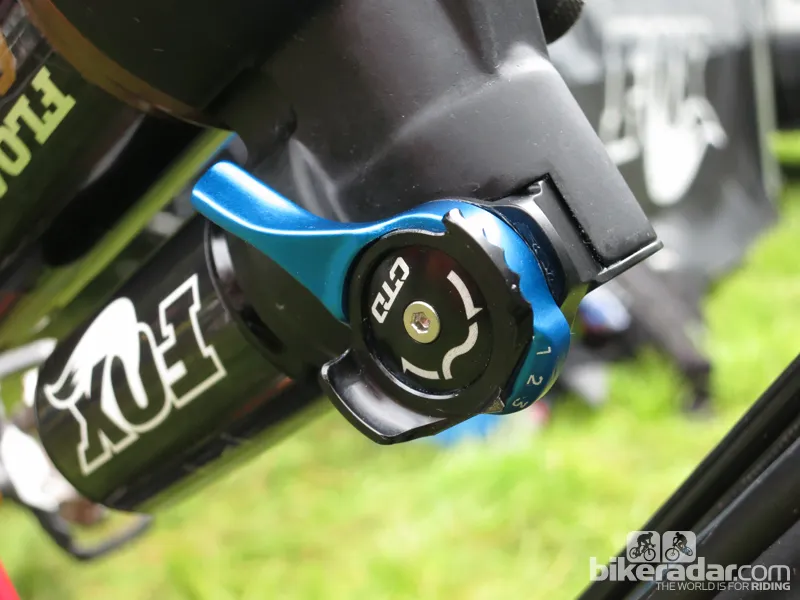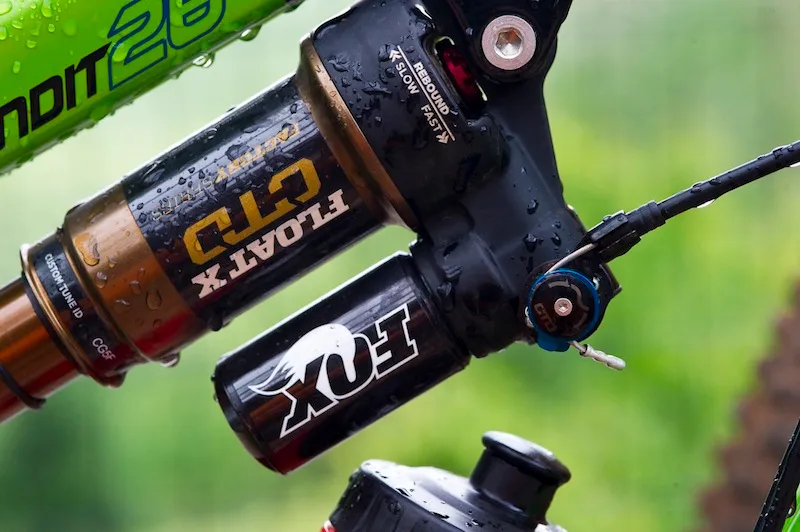Two notable additions to Fox Racing Shox 2014 line are the new Float X rear shock and the revised TALAS suspension fork. (Click here to read our review of the updated TALAS fork .) BikeRadar tested both components over several days of riding and racing in Hood River, Oregon—the first stop on this season’s Oregon Enduro Series.
The Fox Float CTD shock is one of the most widely spec’d air shocks on the market—used for everything from cross-country race bikes to long-travel trail bikes. While both versatile and capable, it does have its limitations, particularly when it comes to performance on extended descents, where the shock’s low oil volume can result inconsistent performance as the shock heats up. This middle ground between cross-country and gravity riding is now the realm of the Float X shock.
Float X CTD
- Pros: Good small bump sensitivity; useable range of damping adjustments
- Cons: Lacks the Float CTD’s tool-free rebound adjuster
- Price: US$575/£515
- Weight: 365g
- More information: www.ridefox.com

The Float X was designed with 140-180mm travel bikes in mind
The new Float X borrows its technology from the Float and the DHX Air, which it replaces. It shares the same external rebound and compression adjustments as the standard Float: the Climb, Trail and Descend low-speed compression adjustments are the same, although the damping circuit is located on the piggyback reservoir. The Float X is also available with a remote that allows the user to switch between the three modes.
Somewhat disappointing is the location of the rebound dial, which is tucked under the upper shock eyelet; a 2.5mm (or smaller) hex wrench is required to make rebound adjustments.

While rebound adjustments are often a set-and-forget affair, the location of the rebound dial on the Float X means you'll have to dig out your multi-tool to make trail-side changes
As one might expect from a larger shock designed to hold a higher volume of oil, the Float X is approximately 157g heavier than a standard Float CTD shock. Compared to the DHX Air, the Float X weighs approximately 85g less, with more external adjustments.
Ride impressions
Compared to the Float that came on our Santa Cruz Bronson test bike, the Float X is noticeably more active in the fully open ‘Descend’ mode, with better small bump sensitivity. The lightest damped Trail mode on the Float X felt roughly equivalent to the Float in ‘Descend’ mode. According to Fox suspension engineer Bryan Anderson this is a result of differences in the shocks’ damping circuits.
The location of the CTD knob on the side of the reservoir made on-the-fly adjustments a breeze. Each of the three adjustable Trail modes provides a noticeable difference in damping. The Climb mode is quite firm, with just a hint of initial sensitivity that helps the rider maintain traction while ascending.

The CTD knob is easy to toggle from the bike
While our time on the Hood River trails allowed us to get a feel for the shock’s ability to absorb small and large hits with ease, the real test came when we returned to our Colorado proving grounds. On extended descents the shock worked as advertised, providing consistent, fade-free performance and ample support through the entire stroke.





